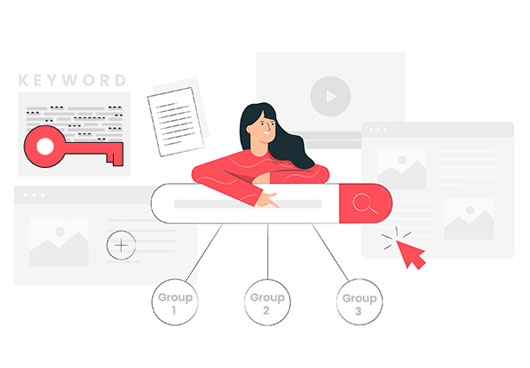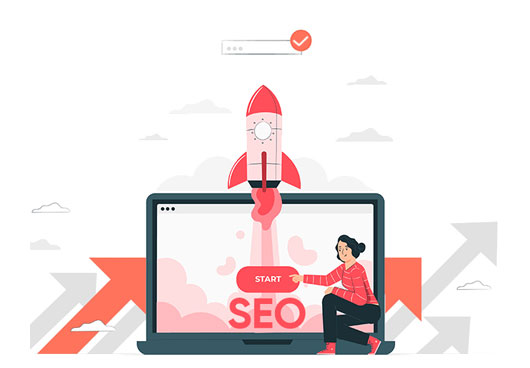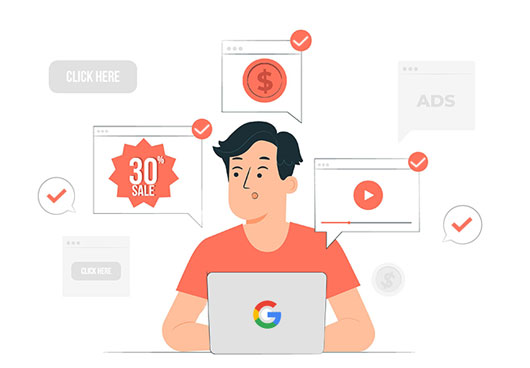Facebook Ads Best Practices for Fintech Companies
Contributors:
Abid Ali
Published: November 29, 2024

Summary
Facebook offers fintech companies a powerful platform to connect with over 3 billion users, drive app installs, boost brand awareness, and acquire leads. To succeed in this competitive and regulated space, fintech advertisers must craft compliant, engaging ads while leveraging advanced targeting, ad formats, and analytics tools. This guide shares actionable tips for identifying target audiences, optimizing campaigns, and tracking performance metrics like CPL and ROAS. By embracing strategies like video ads, A/B testing, and personalized campaigns, fintech companies can maximize ROI and scale effectively in today’s digital landscape.
With over 3 billion monthly active users, Facebook offers fintech companies an unmatched opportunity to scale and connect with their target audience. Whether it’s driving app installs, boosting brand awareness, or acquiring new leads, Facebook Ads can be a highly effective tool. However, navigating the ad regulations and stiff competition in the fintech space demands a strategic approach.
Dive in and learn how Facebook Ad strategies can help your fintech business thrive in today’s competitive landscape.
Understanding Fintech Advertising on Facebook
Regulatory Challenges in Fintech Advertising
Fintech companies face unique challenges when advertising on Facebook due to strict compliance requirements. Ads must align with both Facebook’s advertising policies and industry regulations, avoiding misleading claims.
Tips to overcome these hurdles:
- Use clear, straightforward language that explains your product’s value.
- Add disclaimers to ensure transparency. For instance, if discussing high returns, disclose potential risks to align with compliance.
- Incorporate social proof, such as customer testimonials or awards, to establish trustworthiness.
Opportunities Facebook Offers Fintech Companies
Facebook Ads provides several tools and features that allow fintech companies to build trust and scale effectively.
Key opportunities include:
- Advanced Targeting Options: Reach niche audiences like young professionals with high disposable incomes.
- Dynamic Ads: Showcase multiple benefits of your app or service in a single ad unit.
- Robust Analytics Tools: Use Facebook Ads Manager to track performance metrics in real-time.
Emerging Trends in Fintech Facebook Ads
Adapting to trends is vital for fintech advertisers. Successful fintech brands are leveraging strategies like:
- Personalized Campaigns: Customize ads based on users’ financial behaviour and app usage.
- Video-Based Carousel Ads: Combine storytelling with product highlights to grab attention.
For example, brands like Klarna successfully use carousel ads to target their aspirational audience with a message of “Buy now, pay later,” layered with vibrant visuals.
Target Audience Segmentation
Identify Your Ideal Customer Profile
Understanding your audience’s financial habits and problems is essential. Audience Insights is a great tool to gather critical data such as age, income, and career habits.
For example, suppose your product is a savings app. In that case, your ideal profile might include millennial professionals interested in budgeting or investment tools.
Techniques for Precise Targeting
Facebook Custom and Lookalike Audiences are invaluable for narrowing down your audience:
- Custom Audiences: Target people who’ve visited your website, joined your email list, or interacted with your app.
- Lookalike Audiences: Reach new users who share characteristics with your existing loyal customers.
Case Study – Cleo:
This millennial-focused budgeting app successfully used Custom Audiences to target its current app users while simultaneously deploying Lookalike Audiences to expand its reach. Result? A significant increase in app installs.
20 Facebook Ads Best Practices
1. Crafting Engaging, Compliant Ad Content
Compliance doesn’t have to kill creativity. Follow these best practices to craft compliant and engaging ads:
- Use clear, benefit-driven ad copy. For example, highlight your app’s ability to “save users $500 on average each year.”
- Avoid finance jargon and use approachable language.
Example of excellent ad copy:
“Tired of losing track of your spending? Download [App Name] and start saving smarter!”
2. Using Different Ad Formats for Fintech Promotions
Facebook offers diverse ad formats that fintech marketers can leverage:
- Carousel Ads: Perfect for showcasing unique features of your app or service. For example, Klarna’s carousels tell a brand story while highlighting its core benefit—“Pay later options.”
- Video Ads: Tap into video storytelling to showcase how your product benefits users daily. Acorns, for example, uses short explainer videos to simplify the complex topic of investing.
- Image Ads: Keep visuals clean and highlight specific calls to action like “Sign Up Today.”
3. A/B Testing for Optimization
Experiment with ad components like imagery, headlines, and calls to action to determine what resonates most with your audience. Test two ad versions simultaneously to identify the higher-converting one, then scale based on your insights.
Example success metric: Evaluate which ad drives a lower Cost Per Lead (CPL) or a higher Click-Through Rate (CTR).
4. Take Advantage of Facebook’s Ad Reporting Tool
Facebook Ads Manager includes comprehensive campaign reporting to help you understand which strategies are driving results. Reviewing metrics like Conversions, Reach, and Frequency helps refine your targeting and optimize budget allocation for maximum ROI.
5. Use Correct Formatting
Fintech ads are particularly vulnerable to errors due to Facebook’s strict visual guidelines. Follow these tips:
- Dimension Specifications: Use the correct dimensions for each ad format, such as 1200 x 628 pixels for single images or video ads.
- Text-to-Image Ratio: Comply with Facebook’s requirement of no more than 20% text in an image. Otherwise, your ad may not be approved or may have reduced reach.
6. Use Emotion in Ad Creatives
While fintech is a serious topic, tapping into emotions like trust, security, and financial freedom can help grab the audience’s attention.
Example: Consider using imagery that evokes feelings of stability or peace of mind when promoting a savings app or investment tool.
7. Target Ads to Mobile Users
Mobile usage is on the rise, especially in the financial sector. Target mobile users with high frequency to ensure your ads are seen regularly.
8. Use Ad Scheduling
Maximize the impact of your ads by scheduling them during peak times for financial activities, like payday or tax season. This helps increase the likelihood of conversions and saves the budget on ad impressions outside these high-traffic periods.
9. Use Dynamic Ads
Dynamic ads automatically show relevant content to users based on their previous interactions with your brand. This is particularly valuable for fintech companies with multiple products or services.
10. Leverage PPC Advertising for Financial Advisors
Financial advisors can also use pay-per-click (PPC) advertising to target specific keywords related to their services. This helps increase visibility for potential clients actively searching for financial advice and can be combined with Facebook advertising for a comprehensive marketing strategy.
11. Use Meta Ad Library
Meta Ad Library is a database that allows users to search and view all ads running on Facebook platforms. This can be useful for researching competitor ads, analyzing current ad trends, and gathering inspiration for your own ad campaigns.
12. Include a Call to Action
Every ad should have a clear call to action that directs users towards the desired action, whether it’s downloading an app, signing up for a service, or visiting a website. Make sure your call to action is prominent and easy to understand.
13. Use Retargeting Ads
Retargeting ads allow you to show ads specifically to users who have already interacted with your brand in some way, such as by visiting your website or engaging with a previous ad. This can help increase conversions and customer retention.
14. Keep Ad Copy Short and Concise
In the fast-paced world of social media, it’s essential to capture users’ attention quickly. Keep your ad copy short and to the point, highlighting the most important information and benefits of your product or service.
15. Use Facebook’s Custom Audiences Feature
Custom Audiences allow you to upload a list of your current customers or subscribers and target them with specific ads. This can be useful for promoting new products or services, offering special deals, or re-engaging inactive users.
16. Use Video Effectively
Video ads have been shown to be more engaging and effective than static ads. Use video to showcase your product or service in action, tell a story, or create an emotional connection with your audience.
17. Use Instant Experiences
Facebook’s Instant Experiences feature allows you to create immersive, full-screen ads that showcase your product or service in a visually appealing way. This can help increase engagement and conversions.
18. Keep Ads Relevant to Your Target Audience
Make sure your ads are tailored to your target audience. This includes using relevant language, imagery, and targeting options to ensure the right people are seeing your ads.
19. Use Facebook Lead Ads
Lead ads allow users to submit their information directly within the ad, making it easier for them to take action. This can be particularly useful for financial services companies looking to collect leads and gather customer information.
20. Test, Test, Test
Don’t be afraid to continually test and adjust your ad strategies. Use A/B testing, try different targeting options, and analyze your results to continuously improve the effectiveness of your ads.
Top 3 Budgeting and Bidding Strategies
1. Setting an Effective Budget for Fintech Ads
Start small. Allocating $100 per week for testing can help identify the best-performing ads. Once insights are gathered, gradually scale your budget to maximize impact.
2. Understanding Facebook Bidding Options
Facebook offers several automated and manual bidding options tailored to campaign goals:
- Cost Cap: Ideal for lead generation campaigns targeting a specific CPL.
- Bid Cap: Useful for controlling maximum costs in competitive niches like finance.
3. Maximizing ROI
To optimize spending, align bidding options with goals like app installs, webinar signups, or demo requests. For instance, Lemonade’s Facebook campaigns focus on driving cost-effective signups while maintaining premium service positioning.
Tracking and Analyzing Performance
Key Metrics for Fintech Ads
Track these essential KPIs:
- Cost Per Lead (CPL): Measure ad spend against each acquired lead.
- Customer Lifetime Value (CLTV): Assess the long-term profitability of your acquired leads.
- Return on Ad Spend (ROAS): Evaluate how much revenue you generate for every dollar spent on Facebook Ads.
Tools for Data Analysis
- Use Facebook Pixel for tracking user activities post-click.
- Integrate Google Analytics to gain cross-platform insights on user engagement.
Leveraging Performance Data
Analyze which KPIs are underperforming and adjust campaigns accordingly. For example, optimize your landing page if your ads have an excellent CTR but low conversion rates.
Successful Fintech Facebook Campaigns
Campaign Success Stories
Explore these proven strategies from pioneering fintech brands:
- Cleo: Used an informal tone paired with user-generated content to simplify budgeting for millennials.
- Coinbase: Simplified cryptocurrency adoption with platform walkthrough ads that emphasized ease of use.
- Klarna: Ran themed carousels with clean visuals and a compelling “Buy Now, Pay Later” proposition.
What Fintech Companies Can Learn?
- Engage users with authentic, relatable messaging.
- Keep visuals clean and focus on a singular CTA for clarity and impact.
- Use real-time data (e.g., Facebook Audience Insights) to refine targeting and messaging.
How to Build Long-Term Facebook Advertising Success?
- Continuously test and update your ad creatives to stay ahead of competitors.
- Stay updated on changes to Facebook Ad policies and fintech regulations.
- Attend webinars or download eBooks focused on Facebook ad optimization specific to fintech.
Start Scaling Your Fintech Business with the Power of Facebook Ads
Facebook Ads are a game-changer for fintech companies looking to connect with niche audiences and scale rapidly. By following these best practices, you can create high-performing ad campaigns that deliver results.
Looking to triple your leads or improve your ad performance? Reach out to upGrowth for expert support. We specialize in helping fintech startups scale their digital marketing efforts for maximum ROI.
Request a Free Consultation and discover how we can help you achieve fintech advertising success!
Frequently Asked Questions
1. What are the key components of a successful Facebook ad campaign for fintech companies?
An effective Facebook ad campaign for fintech companies consists of several key components: relevant targeting, engaging and high-quality visuals, clear and compelling ad copy, and active use of Facebook’s advanced advertising tools, such as dynamic ads and lookalike audiences. Additionally, continuous testing, optimization, and alignment with well-defined business objectives are crucial to its success.
2. How can fintech firms effectively utilize dynamic ads on Facebook to increase conversions?
Fintech firms can leverage dynamic ads by personalizing ad content based on user behaviour and interests, maximizing relevance and engagement. These ads automatically showcase the right products or services to the right audience, using real-time data such as browsing history and previous interactions. Correctly set up, dynamic ads can significantly boost conversion rates by ensuring each user sees content tailored to their needs.
3. What are the best practices for crafting compelling ad creatives and visuals for fintech services on Facebook?
To craft compelling ad creatives for fintech services, emphasize simplicity and clarity. Use clean, professional visuals with a single clear call-to-action (CTA) to guide users towards the desired action. Incorporate branded elements for consistency and use infographics or videos to explain complex financial products. It’s also essential to use authentic, relatable images that resonate with your target audience.
4. What targeting strategies should fintech companies employ to reach their ideal audience on Facebook?
Fintech companies should utilize a mix of location-based, demographic, interest, and behavioural targeting to hone in on their ideal audience. Creating and refining lookalike audiences based on existing customer data can help find new potential leads similar to your best clients. Leveraging Facebook Audience Insights to understand user behaviours and preferences further refines targeting accuracy.
5. How can fintech companies test and optimize their Facebook ad campaigns for better ROI?
Testing and optimization start with running A/B tests on different ad elements, such as images, headlines, and CTAs, to identify what works best. Monitor critical metrics like conversion rates and cost per acquisition (CPA) to track performance. Use these insights to adjust targeting, bid strategies, and ad creatives. Regular examination of campaign analytics and adaptation based on data-driven conclusions is essential for improving ROI.
6. What are the common mistakes fintech companies make with Facebook ads, and how can they be avoided?
Common mistakes include using overly complex messaging, neglecting to test and optimize ad elements regularly, and insufficiently targeting audience segments. To avoid these pitfalls, simplify messaging, ensure ongoing testing and adjustments to campaigns, and utilize Facebook’s extensive targeting options to refine audience reach. Additionally, stay informed about platform updates and regulatory changes to maintain compliance and efficiency in ad strategies.
About the Author
Associate Copywriter
Abid Ali is an Associate Copywriter at upGrowth, where he plays a key role in supporting diverse marketing projects with his knack for creating engaging and persuasive content. With a sharp eye for detail and a passion for storytelling, Abid collaborates closely with the team to bring innovative ideas to life, ensuring every campaign resonates with its audience. His dedication to crafting impactful messaging reflects his growth-oriented mindset and commitment to excellence.
 Growth Strategy and Planning
Growth Strategy and Planning Inbound Growth
Inbound Growth Growth Hacking
Growth Hacking Search Engine Optimization
Search Engine Optimization Paid and Performance Marketing
Paid and Performance Marketing Social Media Marketing
Social Media Marketing AI-Driven Growth Strategy
AI-Driven Growth Strategy
 Growth Tools
Growth Tools Offers
Offers

















Leave a Reply